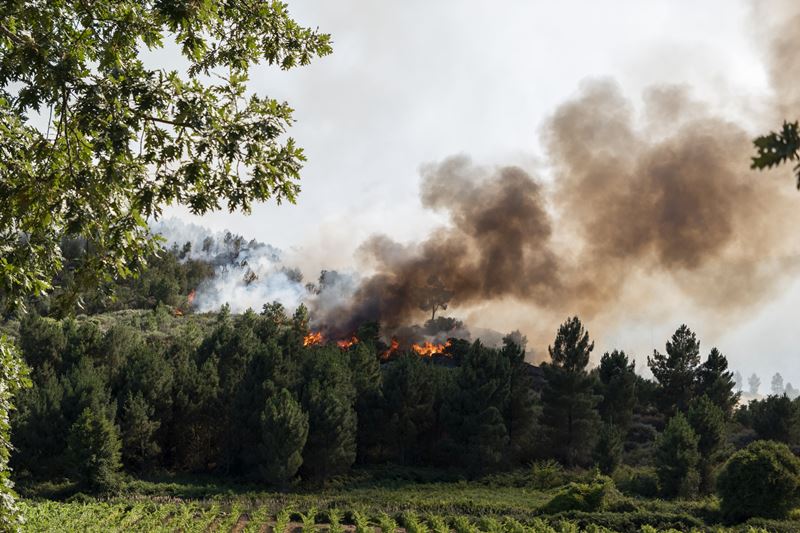Understanding the grey zone in wine production
Strategies for smoke-exposed winemaking
2024-04-03

In the wake of wildfires that sweep through wine-producing regions, the impact of smoke on vineyards can lead to wines imbued with an unwelcome smoky flavor. This issue has led to significant research efforts aimed at understanding the "grey zone" of smoke exposure in grapes and the resulting wines. An Australian project, spearheaded by Leigh Schmidtke from Charles Sturt University, has shed light on this complex issue, offering hope and guidance for winemakers navigating the aftermath of such environmental challenges.
The research began in response to the devastating wildfires of 2020, highlighting the urgent need to establish acceptable levels of smoke exposure for producing wines that maintain their desired quality. Through meticulous analysis, the study identified specific markers in grapes that indicate the presence of smoke-derived compounds in the finished wine, potentially leading to smoky notes.
This breakthrough confirmed that grape markers are a reliable measure of smoke exposure, providing insights into the levels of smoke-related compounds in wine made from grapes subjected to low to moderate smoke exposure. A significant finding was the positive correlation between the levels of smoke odor markers, especially the concentration of total glucosides, in the grapes and their counterparts in the finished wines. This correlation offers a ray of hope, suggesting that with controlled exposure and careful winemaking techniques, the impact of smoke can be mitigated.
Furthermore, the study reinforced the idea that modifying winemaking techniques to reduce contact with the grape skins and extraction can decrease the concentration of smoke exposure markers in the final wine. Techniques such as limiting extraction methods or reducing pressing yields in white grapes, or minimizing skin contact time in rosé production, can significantly lower the level of smoke-derived compounds. This approach is particularly effective in producing Chardonnay wines with acceptable quality, despite their relatively low fruit intensity, by focusing on reducing skin contact and pressing yields.
However, the challenge remains with certain varietals. Rosé wines, for example, struggled to mask the smoke notes due to insufficient fruity flavors. Similarly, producing acceptable Pinot Noir wines was difficult regardless of the vinification techniques employed and the level of grape glucosides, indicating a direct correlation with smoke exposure.
In contrast, Shiraz grapes exposed to low to moderate levels of smoke were able to produce wines without evident smoky notes. This success is attributed to the masking effect of the varietal's fruity characters, such as red and black fruits, on the smoke aroma and flavor. This finding underscores the importance of understanding not only the levels of glycosidic markers in grapes but also how the grape's composition, including smoke-derived compounds and winemaking techniques, influences the intensity and quality of fruity flavors in the wine.
This research offers a beacon of hope for winemakers dealing with the aftermath of wildfires. By understanding the "grey zone" of smoke exposure and employing strategic winemaking techniques, it is possible to produce wines that overcome the challenges posed by smoke, ensuring that the beauty and complexity of the wine are not overshadowed by the trials of nature.
Founded in 2007, Vinetur® is a registered trademark of VGSC S.L. with a long history in the wine industry.
VGSC, S.L. with VAT number B70255591 is a spanish company legally registered in the Commercial Register of the city of Santiago de Compostela, with registration number: Bulletin 181, Reference 356049 in Volume 13, Page 107, Section 6, Sheet 45028, Entry 2.
Email: [email protected]
Headquarters and offices located in Vilagarcia de Arousa, Spain.